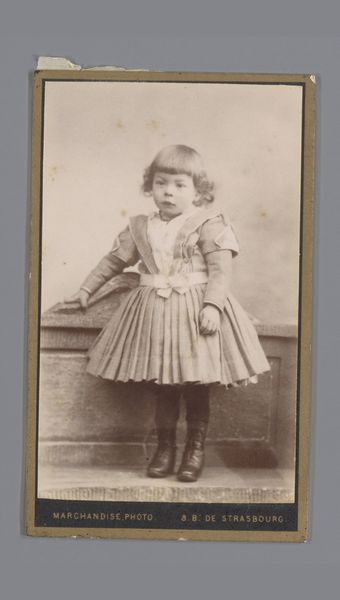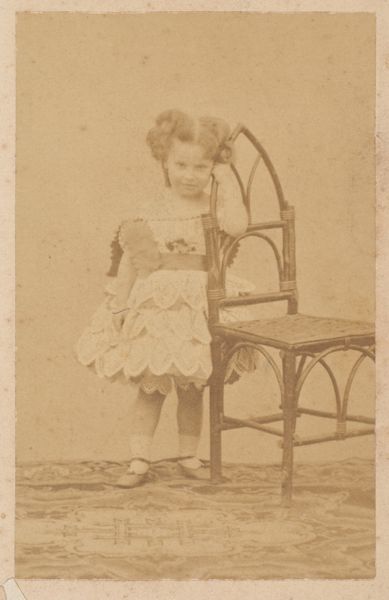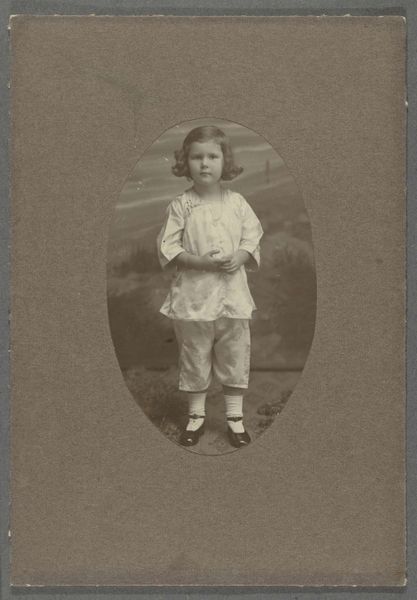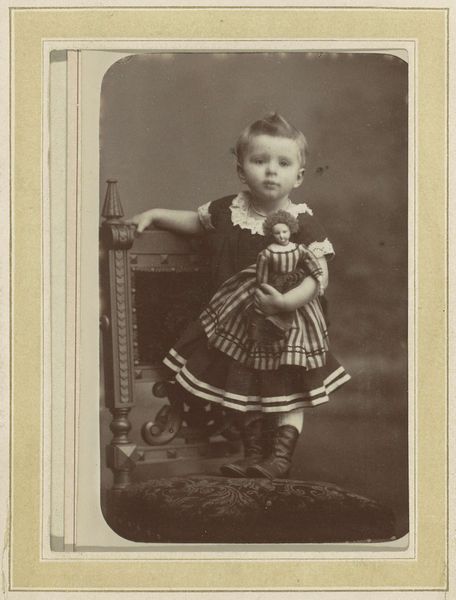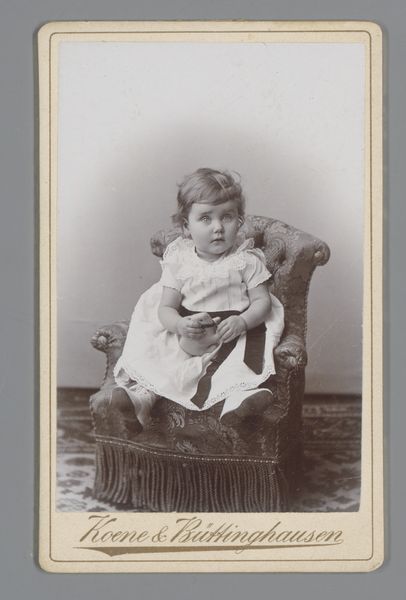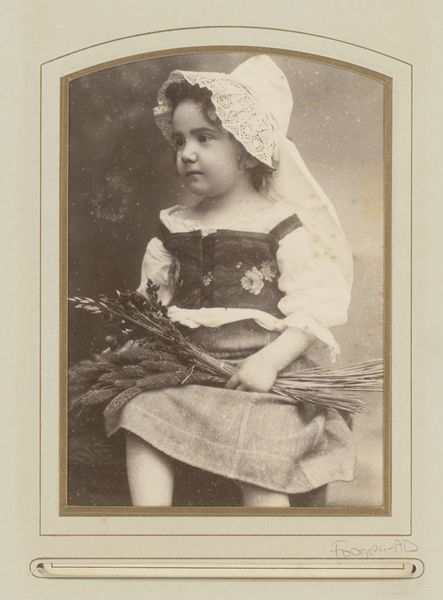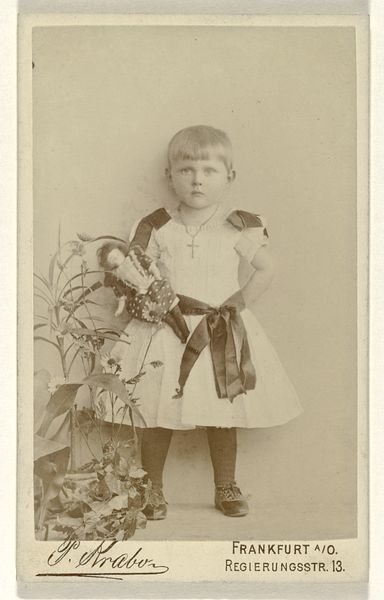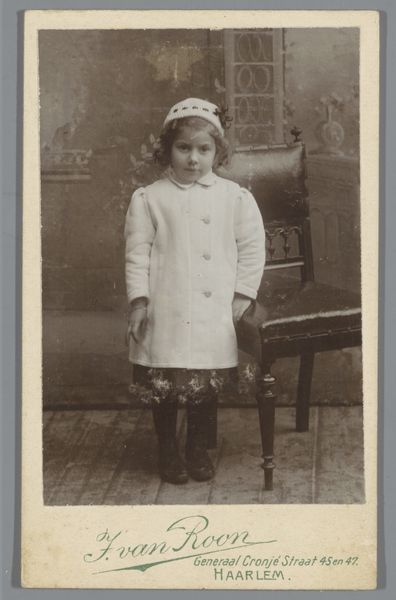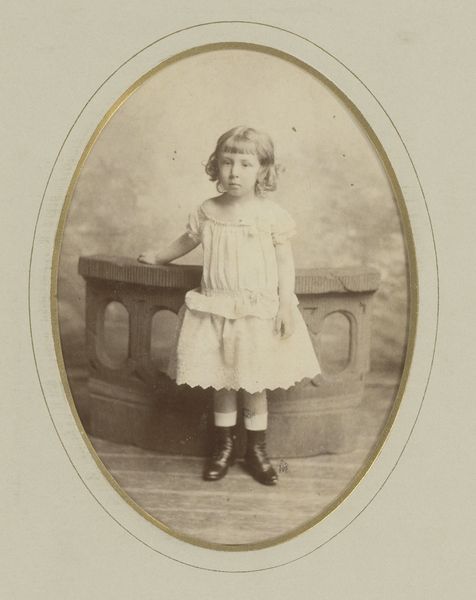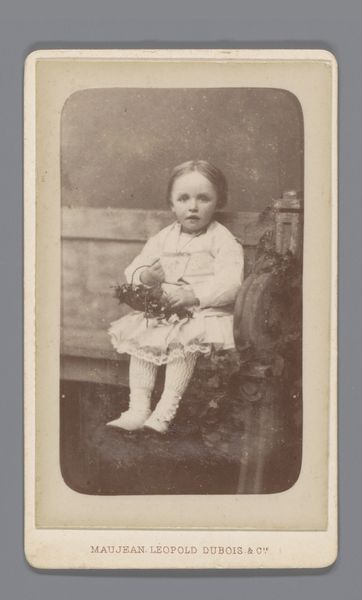
photography
#
portrait
#
photography
#
watercolor
Dimensions: height 86 mm, width 56 mm, height 103 mm, width 64 mm
Copyright: Rijks Museum: Open Domain
Editor: This portrait, taken sometime between 1895 and 1915 by Camillus Franciscus van der Aa, is a rather charming photograph of a toddler. The child, perched on a stool to reach a table, seems both dignified and a little melancholic. What catches your eye when you look at this piece? Curator: What immediately strikes me is the studio setting, very typical of that era. These formal portraits, often the domain of the rising middle class, became important documents of family identity. The stool, the ornate table made of twigs – it’s all a carefully constructed stage. Editor: A stage for presenting oneself? Curator: Exactly. Consider the child's attire - pristine white. Cleanliness became a marker of status and respectability in this period. This image isn't just a record; it’s an assertion of social position, a public display of a specific kind of family life. The photograph served a purpose, a function within that family's aspirations and social sphere. Also, where would the family store photographs such as this? Editor: In an album, probably, for viewing within the family. Do you think photography was initially intended as art at the time? Curator: The debates surrounding photography's place as art are very rich from this time. The ease of replication made many in the art establishment consider this "less than art" compared to the “uniqueness” and labour involved in paintings, although many photographers used various developing processes and chemicals to further the creative/artistic outcome, pushing back on its “mechanical” simplicity. The societal need for portraits increased its value and market significantly. Editor: That's really insightful. I hadn’t considered the image as such a powerful cultural artifact. It is more than just someone posing for a picture, right? Curator: Precisely! Analyzing photography in its cultural and historical moment allows us to look beyond its surface, to understand its function in shaping perceptions, desires and identities.
Comments
No comments
Be the first to comment and join the conversation on the ultimate creative platform.

